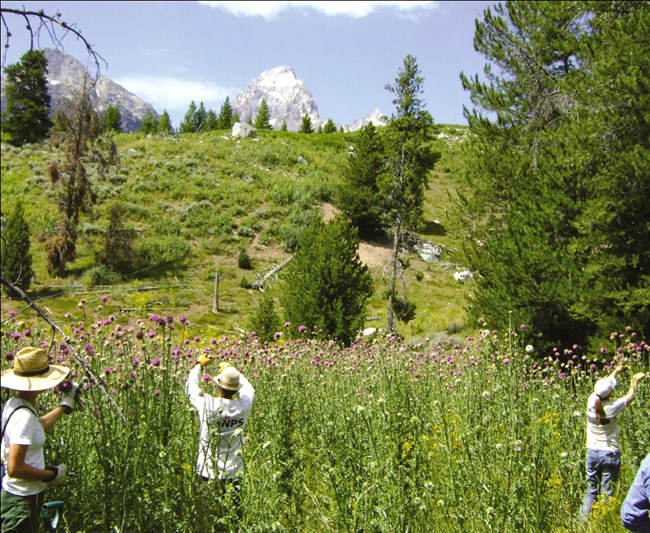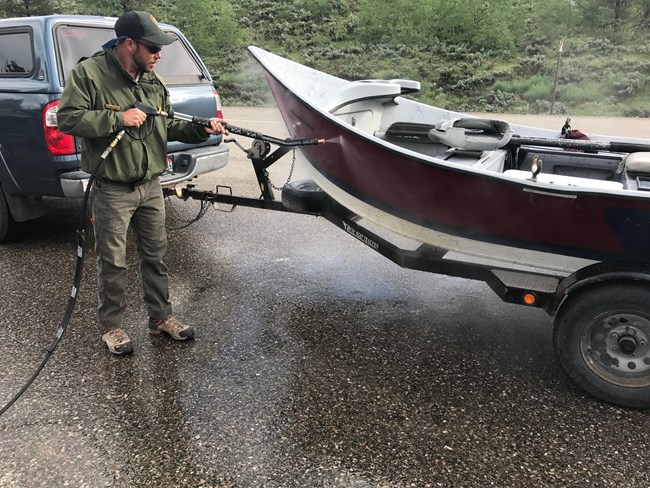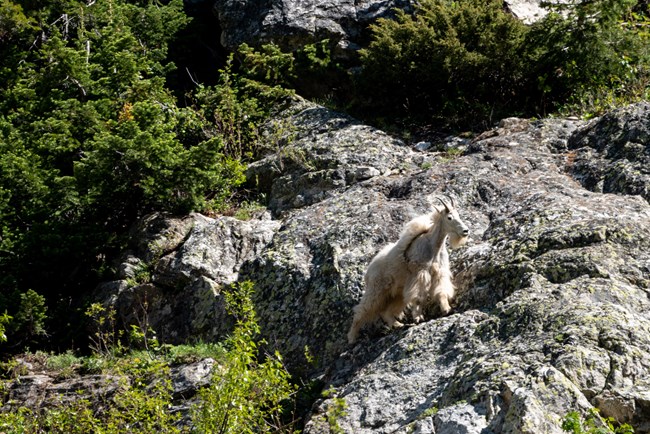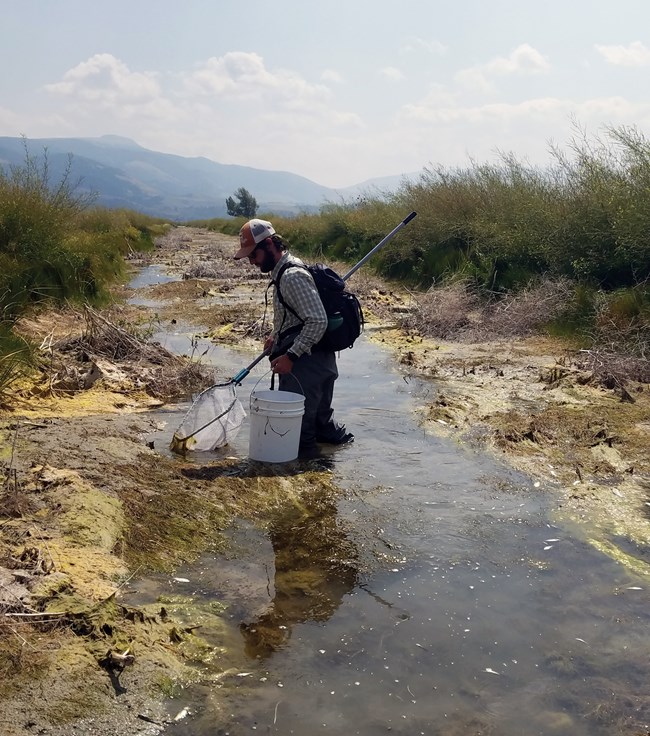
NPS/GRTE
Grand Teton National Park is home to a large number of plant and animal species, unfortunately some of these species do not occur here naturally. Non-native species out-compete the native plants and animals for resources leading to a decrease in habitat for native species and biodiversity. Noxious WeedsPark scientists fight noxious weeds with mechanical (hand or tool control), chemical, biological and cultural controls. Biological controls involve using native predators of the weed (usually insects) to control its spread. Cultural controls include educating people about the dangers of noxious weeds and changing their behavior to avoid further weed spread. The park is also involved with local agencies, groups, and individuals to help control the spread of non-native weeds in the Jackson Hole valley. 
NPS/Adams Aquatic Invasive SpeciesAquatic invasive species (AIS) are aquatic organisms that are not native to an area. These species vary greatly and usually brought in by watercraft. Once introduced, the species can thrive without the presence of their natural predators 
NPS/Adams Mountain GoatsMountain goats (Oreamnos americanus) are native to many rugged mountains of the northwest US, however not to the Greater Yellowstone Ecosystem. The nearest native mountain goat are in the Lemhi Range of Idaho, approximately 125 miles northwest of Grand Teton National Park. From 1969 to 1971, the Idaho Department of Fish and Game released goats into the Snake River Range south of the park for hunting. This population grew and moved into to new areas. Mountain goats first appeared in the Teton Range in 1977, and in the park two years later. Until 2008, mountain goats were seldom seen and not thought to be permanent residents. Since then, park biologists have documented adult female mountain goats (nannies) with young (kids) each year, indicating that a breeding population is now established in the park. The park is now trying to actively manage the mountain goats to protect the fragile bighorn sheep population. 
NPS/GRTE Kelly Warm SpringKelly Warm Spring is a thermal feature with a long history of aquarium dumping leading to numerous nonnative species in the spring. Biologists found some warm water species downstream in Ditch Creek, and some traveled to within 10 yards of the Snake River. Some of the most common species are goldfish, mad toms, and American bull frogs. After years of analysis, the park moved forward to remove the non-native species in an effort to restore the native ones. The treatment involved rotenone, a chemical lethal to organisms with gill. Approximately 600-700 pounds of fish died through these efforts, but some of the invasive species survive. The park is looking for other treatment strategies to remove the remaining invasive species to make way for the re-introduction of the species that belong! |
Last updated: May 1, 2023
